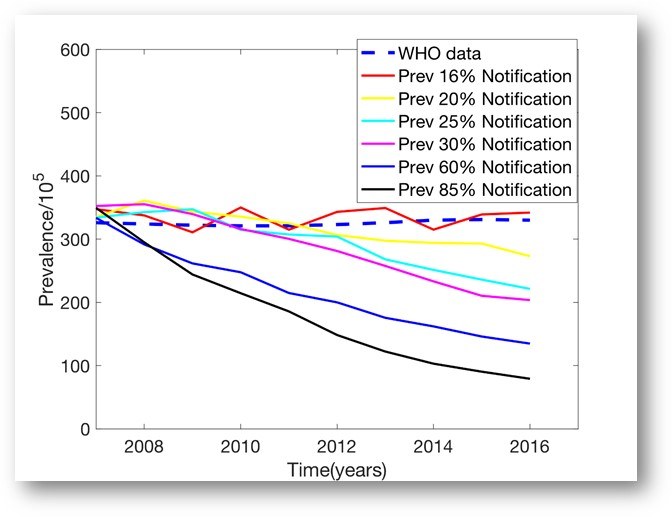Nura Mohammad Rabiu Ahmad defends her thesis on the epidemiological modeling of turberculosis in Nigeria
Jul 22, 2020
Student Nura Mohammad Rabiu Ahmad virtually defended his thesis co-directed by Clara Prats and Daniel López on July 20. The thesis entitled “Multiapproach computational modeling of tuberculosis. Understanding its epidemiological dynamics for improving its control in Nigeria ", presents the application of epidemiological models to the particular case of Nigeria
Tuberculosis (TB) is an infectious disease that is considered to be the biggest killer of mankind in the history of infectious diseases. There are still more than 10 million new TB cases every year and it causes more than 1.5 million deaths annually, according to World Health Organization estimates. Nigeria, with a persistent incidence of about 219 cases per 100000 inhabitants on 2019, is among the 8 countries that accounted for two-thirds of the new TB cases in 2018. The control of the disease in this country is coordinated by the National Tuberculosis and Leprosy Control Program (NTBLCP). Despite efforts, current estimated prevalence is still similar to that of 1990.
Epidemiological models can be used for a more precise diagnosis of TB situation in certain territories, as well as to help on the design and evaluation of control actions. In this project, two modelling approaches have been used to these ends. First, a top-down approach at the country level (Nigeria) by means of the design, testing and fitting of several SEIR-type models, aimed to provide a global picture of the situation and to quantify some of the most relevant parameters. Second, a bottom-up approach to a smaller area (Gombe state) by means of the design, testing and fitting of an agent-based model (ABM), aimed to unravel a particular context and to help on the design and quantification of control actions. In addition, fieldwork was also carried out in order to look for the particular socio-economic factors that are responsible for the epidemiological situation of TB spread; the statistical analysis of the data obtained is the third approach of this project.
SEIR-type approach confirmed a dramatic low notification rate that varies from 16 to 20% during the analysed years (2000-2010). This factor revealed to be the bottleneck for the control of the disease in this country. Model’s predictions showed no relevant effects of control actions without a previous increase in the notification rate. Fieldwork was designed in coordination with NTBLCP local authorities with the aim of analysing socio-economic factors that condition such notification rate in Gombe state. It consisted of an initial gathering of epidemiological data, followed by a set of 52 in-depth interviews with TB patients from different health centres. Obtained data and interviews’ outcomes were statistically analysed using inferential statistics and Anova analysis of mean, with the help of machine learning techniques. Results were devastating: none of the patients interviewed had any knowledge of TB symptoms and 90% had no knowledge of TB transmission mechanisms after talking to the health workers. Mean patients’ delay before going to hospital was 9.6 weeks, and only 10% of interviewed patients went to the doctor within the first month of feeling sick.
The epidemiological information obtained from the top-down approach and the results derived from the fieldwork were used for adapting an agent-based model (ABM) of TB spreading in the context of Gombe state. The resulting ABM was successfully fitted to the evolution of estimated prevalence and diagnosed cases from 2007 to 2016. Then, it was used to test different interventions aimed to increase the notification rate, decrease the diagnosis delay, and increase the population’s awareness regarding TB transmissible.
The multi-approach methodology used in this project revealed to be a robust way of tackling a real problem. It was capable of providing a global and detailed picture of TB situation in a certain area, relating model’s parameters and outcomes with a real socioeconomic context, and generating a useful tool for helping on the design and evaluation of TB control actions.

Share: